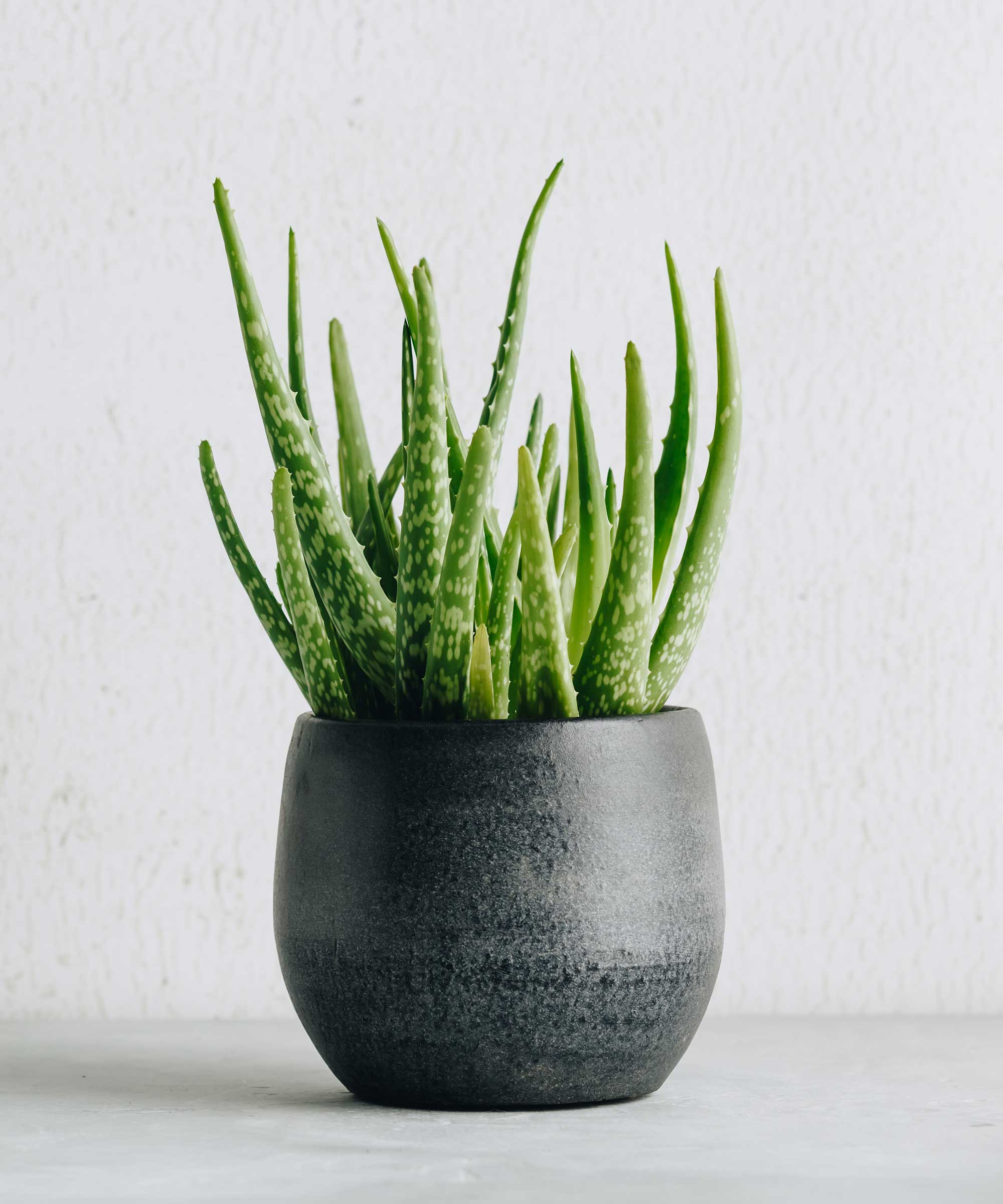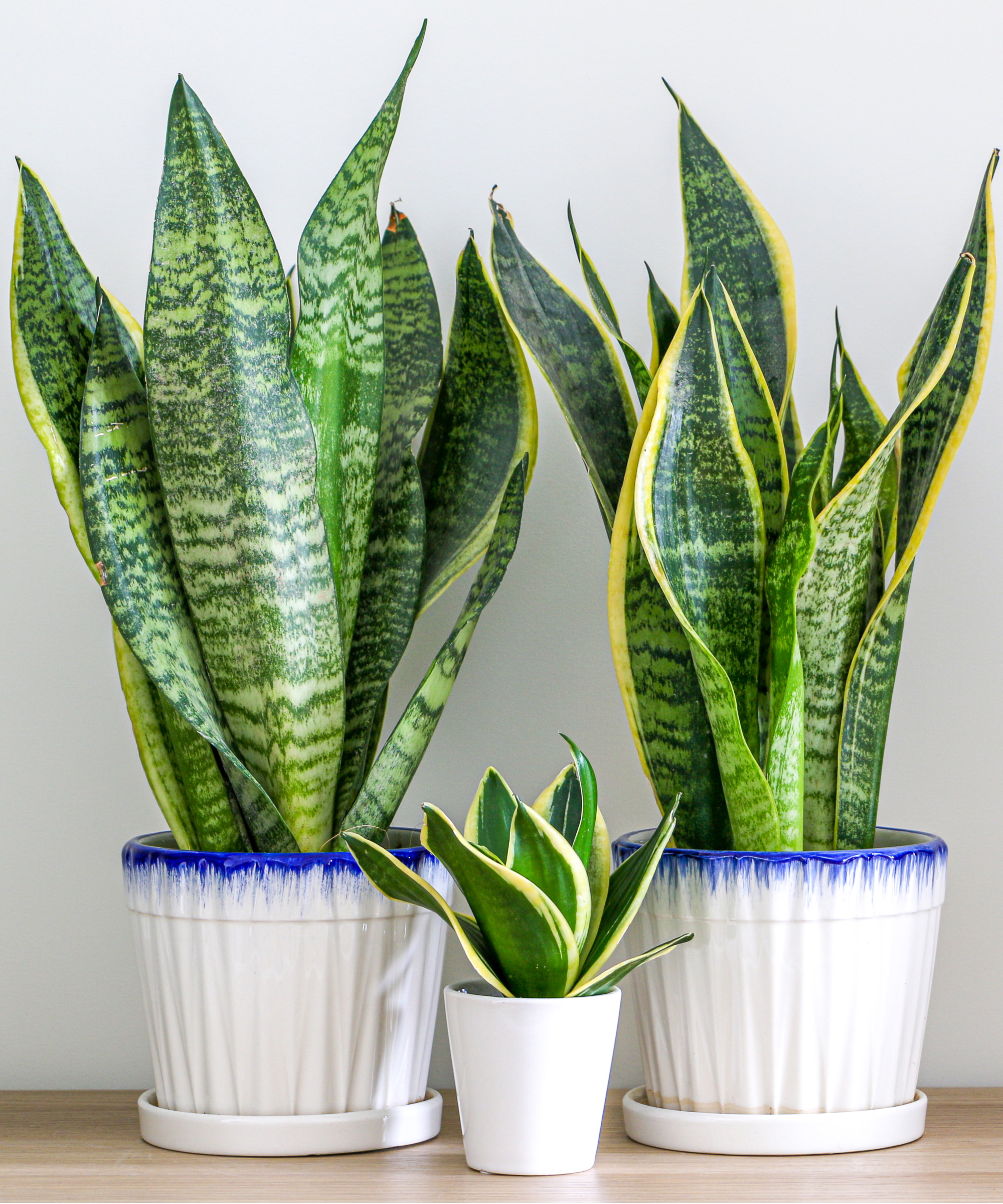Houseplants you don't need to fertilize often – 5 that almost never need feeding
These low-maintenance indoor plants will thrive nonetheless


For some houseplant owners, fertilizing is part of their regular houseplant regime. For others, it's the last thing on their mind. The truth is, feeding your houseplants can be incredibly important for giving them an essential boost of nutrients, but not all indoor plants require fertilizer to the same degree as others.
If you're after the most low-maintenance indoor plants, then you might look for ones that won't complain if they haven't been fed. Fertilizer gives plants some fresh nutrients - the NPK plant fertilizer numbers on plant food products explain which nutrients and how much of them they provide. This can be particularly helpful when your plants are actively growing and using up a lot of energy. However, there are some indoor plants that will thrive even without plant food.
Here, we've compiled an expert list of houseplants that don't need fertilizing often and will cope with not being fed for a bit longer than others.

5 houseplants that don't need fertilizing
While it's true the houseplants listed here almost never need fertilizing, it doesn't mean you shouldn't feed them at all. 'You can get away without fertilizing them, but at least a couple of applications during spring and summer will help your plant stay healthy,' says Raffaele Di Lallo, plant expert from Ohio Tropics. Here are our top picks of indoor plants that will just keep growing without plant food.
1. ZZ plant

Houseplant lovers won't be surprised to see the ZZ plant at the top of this list. These hardy houseplants can cope with neglect extremely well, including not being fed or watered often.
'ZZ plants have the reputation of being low-water and low-light indoor plants. However, they will do better immediately in front of a window and even with a handful of hours of direct sun,' says Raffaele.
ZZ plants tend to be slow-growers, often taking three to five years to reach a height of three feet tall. They have structural stems and are loved for their dark foliage that will keep emerging without fertilizer.
Design expertise in your inbox – from inspiring decorating ideas and beautiful celebrity homes to practical gardening advice and shopping round-ups.
'Water when the top couple of inches of the soil are dry. With plenty of light and water, they will grow faster for you and be more vigorous and sturdy,' Raffaele advises.

Raffaele Di Lallo is the founder of the blog Ohio Tropics which focuses on the care of houseplants and other tropical plants, both indoors and outdoors. He has a large following on Instagram where he gives plant care tips and is the author of Houseplant Warrior: 7 Keys to Unlocking the Mysteries of Houseplant Care, published by Countryman Press.
2. Aspidistra

Also known as the cast-iron plant for its ability to keep growing in poor conditions, aspidistras will provide luscious green foliage in your home without any fertilizer needed.
From a lack of water to sitting in a chillier spot of your home, these houseplants can cope in nearly any environment. For this reason, they're popular choices for easy indoor plants.
'These plants can survive in pretty dim conditions but will do best in an area with bright, indirect light,' says Raffaele. 'It's also best to water when the top inch of the soil feels completely dry,' he adds.
Shop for an aspidistra at Walmart.
3. Aloe vera

If you know anything about caring for succulents, you'll know they don't often need watering and will be happy in a sunny spot. On top of this, many succulents will also get on without fertilizing.
Aloe vera is a versatile plant often grown for its soothing gel that is used for skin ailments, among other health benefits. As houseplants, they cope well with poor soil quality and don't require fertilizing often. They do grow slowly, but it's extremely easy to propagate aloe vera plants once they become larger.
'Aloe plants need at least some direct sun for best growth. Sharp drainage of their soil is important and they are pretty drought-tolerant plants,' notes Raffaele.
You can find aloe vera plants at Walmart.
4. Snake plant

Not only are snake plants among houseplants that like being pot-bound, these classic indoor plants will offer new sword-shaped leaves even without plant food. In fact, experts warn against giving succulent-like plants, like snake plants, too much fertilizer.
'You don’t want to give these plants much nitrogen because they will put on new growth that may not be the shape you want it to be,' says Lisa Eldred Steinkopf from the Houseplant Guru.
What Lisa describes is the effect of nitrogen on plants, boosting vegetative growth. For snake plants, a fertilizer should rather focus on root strengthening - the role of phosphorus in plant food.
Nevertheless, your snake plant will grow happily in a range of spaces of your home without regular fertilizing.
'Though touted as low-light plants, they can often grow weak and flop over in dim conditions. They actually do beautifully with a few hours of direct sun indoors,' says Raffaele. 'Don't wait too long after the soil goes completely dry before watering them again,' he advises.
Find a snake plant at The Sill.

Lisa is a houseplant expert who runs her blog The Houseplant Guru with over a decade of professional experience at Steinkopf Nursery and Garden Center in Michigan. As a child, Lisa helped her grandma tend to African violets and other houseplants. Since then, Lisa has forged a career providing houseplant advice, holding lectures and writing for publications across the US.
5. Pothos

Good news for those on the hunt for easy indoor hanging plants, pothos plants will keep getting longer no matter how little they're fertilized.
'Vines, such as pothos, grow so rampant they don’t necessarily need fertilizer often,' says Lisa. 'They would benefit from fertilizer a couple of times in the growing season, but will do fine without it.
'Keeping your plant well-watered, in the correct light and clean will go a long way in keeping your plant healthy,' she adds.
When placed in plenty of sunlight, pothos plants will double in length in no time. Take care to prune your pothos to keep it at a desired length and use those cuttings to propagate your pothos.
Fertilizing them too regularly can actually turn your pothos yellow, so take care to only feed it minimally if you do choose to do so.
There are so many pothos varieties to choose from, but the Marble Queen Pothos (available at The Sill) is a popular choice.
FAQs
Why has fertilizer turned my houseplant yellow?
If you've noticed your houseplant turning yellow after being fertilized, it's a sign something isn't quite right. Usually, this is an indicator the plant has been oversaturated by fertilizer and may be experiencing houseplant root rot or even root burn. It's best to only fertilize houseplants during their active growth season and not too often to avoid this happening.
Just remember these plants don't need fertilizing often, but will still benefit from plant food occasionally. This is especially true when they're actively growing and you want to encourage new leaves to emerge. Before you do feed any of your plants, it's worth reading up on common fertilizing mistakes to avoid.

Tenielle is a Gardens Content Editor at Homes & Gardens. She holds a qualification in MA Magazine Journalism and has over six years of journalistic experience. Before coming to Homes & Gardens, Tenielle was in the editorial department at the Royal Horticultural Society and worked on The Garden magazine. As our in-house houseplant expert, Tenielle writes on a range of solutions to houseplant problems, as well as other 'how to' guides, inspiring garden projects, and the latest gardening news. When she isn't writing, Tenielle can be found propagating her ever-growing collection of indoor plants, helping others overcome common houseplant pests and diseases, volunteering at a local gardening club, and attending gardening workshops, like a composting masterclass.